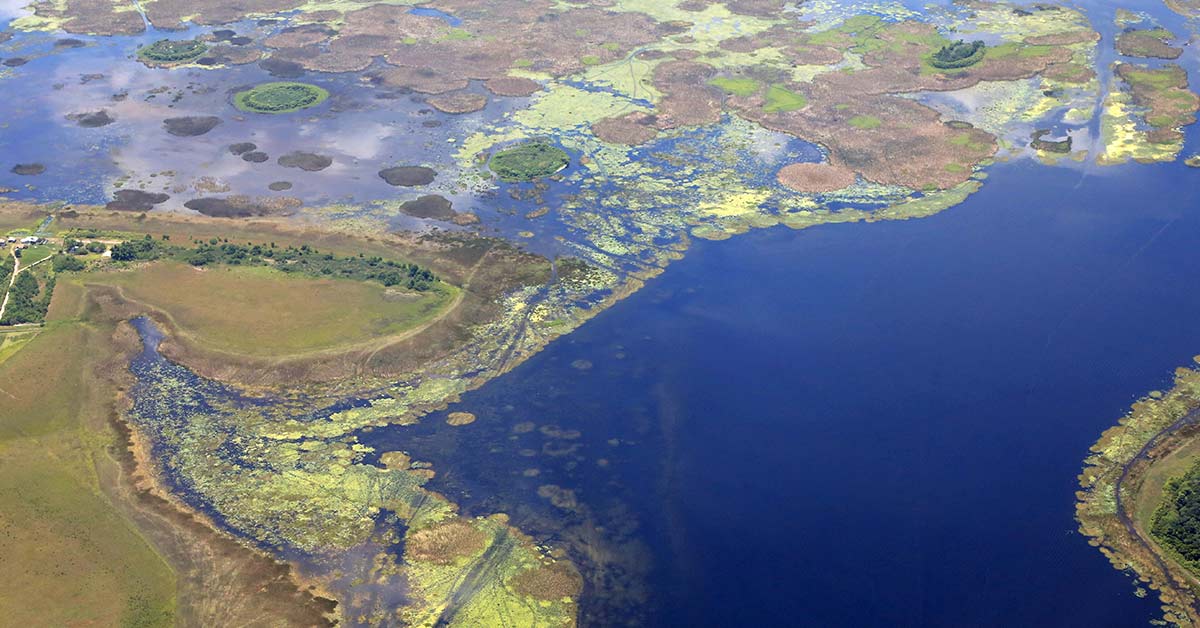Another Step Forward for the Lake Okeechobee System Operating Manual

We are near the end of the beginning of the work the U.S. Army Corps of Engineers needs to do to complete the Lake Okeechobee System Operating Manual (“LOSOM”).
The Process
Lake Okeechobee, the second largest fresh water lake located contiguously within the United States, is the heart of the Everglades. As such, it continues to capture plenty of government attention.
Section 1106 of the 2018 Water Resource Development Act directed the Corps to prepare an assessment under the National Environmental Policy Act (“NEPA”) reevaluating and defining operations for the Lake Okeechobee regulation schedule to take into account additional infrastructure that is expected to be operational in the relatively near future. The additional infrastructure includes the Herbert Hoover Dike rehabilitation, the Kissimmee River Restoration Project, and the Comprehensive Everglades Restoration Plan (“CERP”) C-43 West Basin Storage Reservoir and C-44 Reservoir and Stormwater Treatment Area. (The Corps’ study will not propose new infrastructure beyond evaluation of projects that already have been authorized.)
The Corps will be evaluating public health and safety and flood control as well as water supply, local basin runoff, current and forecasted weather conditions, ecological conditions of Lake Okeechobee and its surrounding areas, and salinity and groundwater control, among other things.
The Corps’ efforts will yield the LOSOM, which will include a new regulation schedule for Lake Okeechobee addressing flood risk management; water supply for agricultural irrigation, municipalities and industry, environment, and Native American Tribes; navigation; enhancement of fish and wildlife; and recreation. The new lake regulation schedule is required to balance the impacts from operations and achieve the purposes of the authorized projects.
Meetings and Workshops
To the end of creating the LOSOM, the Corps held a series of NEPA public scoping meetings earlier this year throughout south Florida. “Scoping” is the step in the NEPA process when the public is invited to participate in identifying issues, alternatives, and potentially significant effects to be considered in the analysis. This helps the Corps identify and eliminate any issues that are not significant or that have been covered by prior environmental review.
As Tim Gysan, the project manager for the LOSOM study, explained, “When people come out to our meetings, we want to know things like, what issues are important to you? What study outcomes do you want to see? How would you measure success? What solutions would you like us to consider? These are some of the important questions we need to explore, and we want to hear your thoughts.”
After receiving significant public comment at the early scoping meetings, the Corps extended the comment period until April 22, 2019. That deadline now has passed, and the Corps will summarize and address all comments as the process moves to the next stage.
The Corps has indicated that there will be public workshops where the Corps will accept input while it evaluates the information it has received, including information it gained during recent extreme high and low water levels and harmful algal blooms, while it also examines various alternatives.
Thereafter, there will be opportunities for interested parties to review the draft documents that the Corps will prepare.
The (Relatively) Near Future
The Corps said that it expects to prepare a draft of the LOSOM and a corresponding NEPA document between October 2021 and January 2022, with public comment accepted from February to March 2022. The Corps should have a final LOSOM ready later in 2022, to coincide with the scheduled completion of the Herbert Hoover Dike rehabilitation.
This means there is time for interested parties to focus their interests and participate in an effort to influence the ultimate result. Local governments, businesses, and individuals interested in affecting how LOSOM will balance flood control, water supply, recreation, navigation, environmental effects to fish and wildlife, and cultural and recreational resources should consider becoming involved in the process if they have not done so already.





